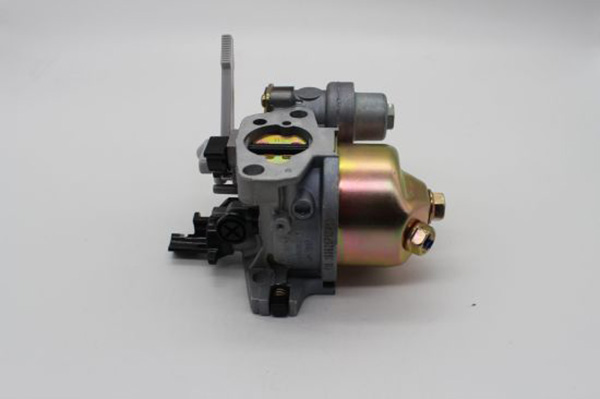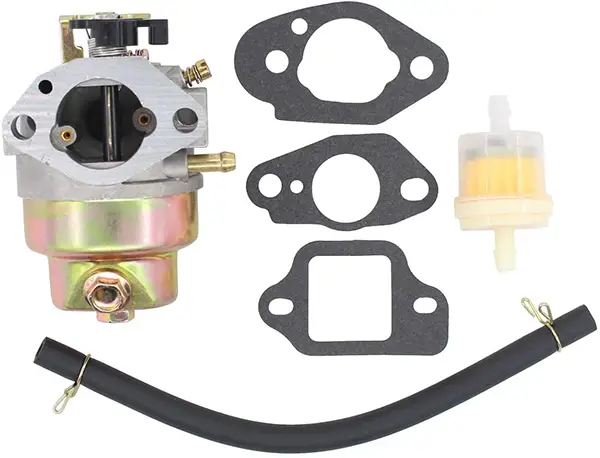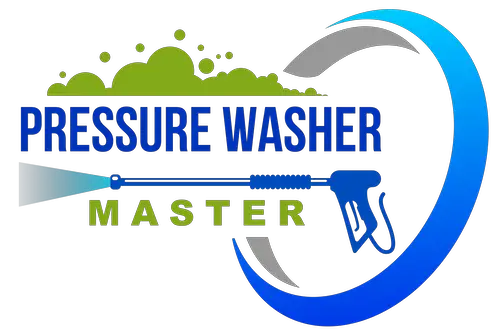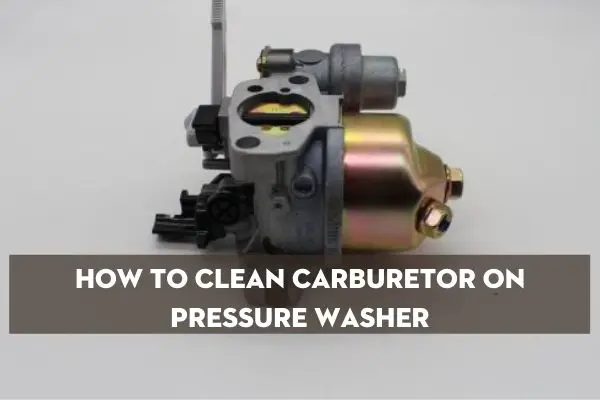One of the most crucial pieces on your gas pressure washer is the carburetor. This part requires some attention from time to time since, if left alone, a carburetor can become clogged, and your pressure washer will simply cease operating.
Here’s a step-by-step instruction on how to clean carburetor on pressure washer. This is a less expensive option than taking it to a store, and it can save you time because you can do it in less time than it takes to go to the store.
What Is A Carburetor?

You must first understand what a carburetor is before we show you how to clean a carburetor pressure washer.
To burn the fuel and function correctly, gas-powered pressure washers require the proper quantity of air. The air to gas ratio must be between 12:1 and 15:1 for your gas pressure washer to function correctly. Your pressure washer contains a carburetor that helps it maintain this ratio.
The carburetor balances the air and gas mixture and ensures that the ratio is correct. If the carburetor becomes clogged, it cannot provide the proper combination of air and gas, resulting in a malfunctioning pressure washer.
What Are Carburetor Cleaning Warning Signs?
How can you determine whether the problem is a blocked carburetor? Some indications and symptoms alert you to the possibility of a clogged carburetor, just as some signs and symptoms alert doctors to your health problem.
Working Problems
A blocked carburetor might make it impossible for air and gasoline to move through. So your pressure washer, of course, will not start. This issue can, however, be caused by any faulty component. So a dirty carburetor might be the cause of a pressure washer not starting, but it’s not always the case.
The engine will not run correctly if the carburetor is clogged. Because there is an imbalance in the combination of air and gasoline, the engine will not perform as well as it should. As a result, a clogged carburetor causes the engine to malfunction.
Sneezing Or Popping Sound
If you hear popping, sneezing, or both, it’s most likely coming from your carburetor. In the vast majority of situations, this indicates that the air and fuel mixture is unbalanced.
For example, you may hear popping noises if there isn’t enough gasoline to air moving through your carburetor, which might cause difficulties in the combustion chamber. This happened to me on a moped when I was a teenager; a screw that controlled the air ratio was missing, resulting in an excessively airy mix.
Black Smoke
If you notice black smoke coming from your pressure washer, there’s a good possibility your carburetor is malfunctioning. More gasoline may be passing through the combustion chamber than is necessary. It may result in the creation of black smoke if it exceeds the acceptable threshold.
Leaking
The fuel will not be able to pass through your carburetor if it is clogged. If you see any leaks coming from the carburetor of your pressure washer, it’s an indication that something is blocking the gasoline from flowing through. And, in the end, that fuel will begin to overflow your carburetor. It’s a sign that it needs to be unclogged if it’s leaking.
Backfiring
Another indication of a congested carburetor is backfiring. It’s easy for the carburetor to overheat if the air and fuel combination isn’t just right. This might cause the pressure washer to overheat, resulting in damage to the engine.
What Causes A Carburetor To Clog?

If you’ve seen any of the above changes in your pressure washer, it’s safe to assume the carburetor is blocked. Now you might be wondering how it got so filthy in the first place and what steps you can take to prevent this from occurring again in the future.
The answer to your query is that your pressure washer clogs up since it has had gasoline in it for a long time. To keep this problem from recurring, either empty the gasoline from your pressure washer or run it for 15-20 minutes now and then.
How To Clean Carburetor On Pressure Washer
Follow this guideline to know how to clean a pressure washer carburetor:
Step1: Remove the spark plug cap to prevent the engine from starting. Then, in the off position, turn the fuel valve.
Step 2: Now it’s time to drain the petrol. Remove the screw holding the carburetor bowl to the carburetor’s bottom, drain the bowl into a container, and check the fuel quality. Keep an eye out for rust, dirt, corrosion fragments, or old gasoline. If your engine has been running for a while, the varnish will build up in the bottom of the carburetor bowl.
Step 3: Spray the interior of the carburetor bowl with carburetor cleaner and wipe it clean if it has a sticky residue. If there is any moisture in the bowl, simply wipe it dry.
Step 4: The main jet’s route is where gasoline enters the combustion chambers from the carburetor. Remove the jet with a flathead screwdriver to examine the channel. Because this is a little brass piece, make sure you have a pan to collect it.
Step 5: If the jet channel is clogged, spray carburetor cleaner into it and use a wire brush to remove any particles or gummed gasoline. Take care not to enlarge the passage beyond its initial dimensions. Then, all you need for gasoline to travel through is a beautiful, clean, shining round hole.
Step 6: Spray the remainder of the carburetor components with carburetor cleaning to remove any debris that might break free and block the jet again. Make careful you use a cloth to collect any overspray.
Step 7: At the top of the carburetor lies the idle jet, which may need to be serviced. Idle jets on specific carburetors will detach at the top. Others are pushed in or may be made of plastic and sealed with O-rings. Pass a wire brush through the idle jet to clean it and make sure the aperture is clear.
Step 8: Reassemble the carburetor by screwing the main jet back into the carburetor stem. Make sure it’s tight, but not too tight.
Step 9: Make that the gasket (flat or O-ring) that connects the carburetor bowl to the carburetor body is in place and not damaged or deformed. Tighten the screw and washer that connects the carburetor bowl to the body of the carburetor. Avoid over-tightening.
Step 10: Make sure there is no gasoline surrounding the carb bowl at this stage. Replace the spark plug and turn the fuel valve back on before starting the engine.
You may watch this video for further understanding of the process:
Conclusion
We brought you a step-by-step guide on how to clean the carburetor on the pressure washer. Cleaning your carburetor regularly will keep your pressure washer running smoothly. It will always function properly and provide you with a satisfactory result.
Keep in mind that, in addition to cleaning the carburetor regularly, you should avoid allowing the carburetor to become blocked. We discussed why the carburetor became clogged earlier. If you keep it in mind, your carburetor will not become clogged as quickly, and you will not need to clean it as frequently.
Relate Post


